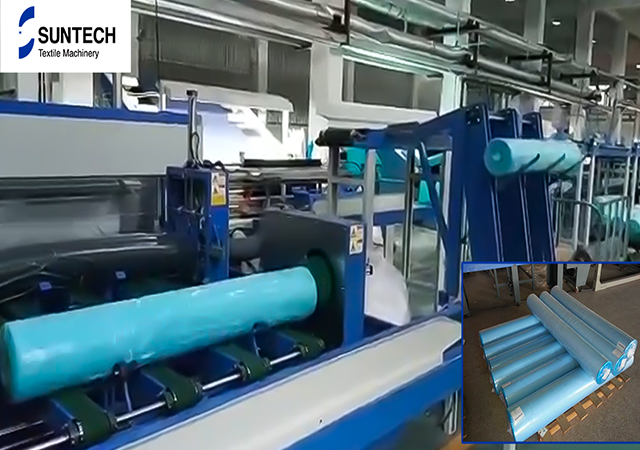Automation has revolutionized businesses and industries by reducing labor costs and improving efficiency and productivity. One of the key innovations in this field is the automatic packaging machine , which offers numerous benefits for organizations. In this article, we will explore the components and adaptation of an automatic fabric roll packing machine, shedding light on its remarkable features, advantages, and cutting-edge technology.
Operational Mechanism
An automatic fabric roll packing machine is a highly efficient production line designed to rapidly pack fabric rolls into containers. This advanced system consists of multiple stations, each dedicated to a specific task within the packing process.
Entry Station: Fabric rolls enter the line through this initial station.
Positioning and Cutting Station: The rolls are conveyed to the next station, where precise positioning and cutting to size occur.
Wrapping and Packing Station: After sizing, fabric rolls move to this station, where they are expertly wrapped and packed into containers.
Sealing and Shipping Station: Finally, containers are securely sealed and transported to the designated shipping area.
Before initiating the packing process, several crucial factors must be considered:
Cleanliness: Ensure the fabric roll is clean and free from debris.
Secure Fastening: Verify that the roll's end is securely fastened and not frayed.
Measurement: Measure the width and length of the roll to determine the most suitable packaging approach.
Packing Material: Polythene PE film, thickness 60-80 Microns. Two different kinds of polythene film for the wo packing proposals.
Normal Packing Proposal:
Normal PE film, thickness 60-80 microns, without heat shrinking function
Vacuum Packing Proposal:
Heat-shrinking PE film, thickness 60-80 microns for vacuum packing. The heat-shrinking film should be able to continuously working ten seconds under 180-220℃ (Degree Celsius)
Fabric Tension Devices
A variety of fabric tensioning devices are available on the market to cater to diverse needs. Let's explore some of these options:
Pneumatic Tensioners: These tensioners use air pressure to ensure precise fabric tensioning. They offer user-friendly operation and exceptional control over the tensioning process.
Electronic Tensioners: Equipped with electronic sensors, these tensioners measure fabric tension with utmost accuracy and repeatability. Their advanced technology provides reliable and consistent results, making them ideal for demanding applications.
Mechanical Tensioners: Mechanical tensioners rely on mechanical mechanisms to achieve fabric tensioning. While they tend to be more affordable, they may require more expertise to operate effectively.

Types of Fabric Roll Packing Lines
In today's market, various types of fabric roll packing lines are available, each with its advantages and considerations. It is essential to evaluate these options to find the one that aligns with your business requirements:
Fully Automatic Lines: Fully automatic fabric roll packing lines exemplify efficiency and convenience. For instance, SUNTECH's ST-ARPM represents a cutting-edge fabric rolling and packing line designed with automation in mind. These lines can pack double the number of rolls per hour compared to semi-automatic or manual lines but may have higher upfront costs and maintenance requirements.
Semi-Automatic Lines: Semi-automatic fabric roll packing lines offer faster operation compared to manual lines, striking a balance between affordability and maintenance requirements. They may not be suitable for exceptionally large or heavy fabric rolls.
Manual Lines: Manual fabric roll packing lines provide the greatest flexibility in packaging options and can accommodate rolls of any size or weight. Although they are the slowest and least expensive option, they offer versatility and adaptability to diverse production needs.
In conclusion, automated fabric roll packing machines are transforming the fabric industry by enhancing efficiency and reducing labor costs. Understanding their components and types is crucial in adapting these machines to meet your organization's specific needs. Whether you opt for fully automatic, semi-automatic, or manual lines depends on your production requirements and budget constraints. Embracing automation in fabric roll packing can significantly improve your production process and overall business operations.While the technology showcased in this blog post holds promise, it is crucial to be aware of potential issues that can arise from improper usage of an automated fabric roll packing line. Inadequate storage or monitoring of fabric rolls could lead to wrinkling or damage. Additionally, neglecting regular maintenance of the line may result in breakdowns that disrupt the production process. Careful attention and adherence to best practices are essential for maximizing the benefits of automation in fabric roll packing.




